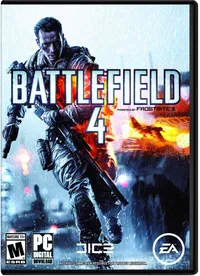Part 1: DirectX 11 Gaming And Multi-Core CPU Scaling
We test five theoretical Intel CPUs in 10 different DirectX 11-based games to determine what impact core count has on performance.
Ashes of the Singularity & Battlefield 4
Ashes of the Singularity
Ashes of the Singularity is a significant part of this series because it’ll appear in our DirectX 11 and DirectX 12 tests. For this first part, we see how the game fares with DirectX 11 between it and our graphics hardware. According to Brad Wardell in his postmortem on Gamasutra:
“The difference between DirectX 11 and DirectX 12 is very easy to explain: On DirectX 11, all your threads in your game can talk DirectX at once but DirectX 11 only talks to the GPU one thread at a time. By contrast, on DirectX 12, all the threads in the game can talk to the GPU at the same time.
"In theory, a 10-Core Intel Broadwell-E, for instance, could do 10x the performance in DirectX 12 than in DirectX 11—provided the video card was fast enough to keep up.”
Ashes actually requires a quad-core CPU (though it’ll run on a dual-core processor, as you’ll soon see). Based on Wardell's interview, this appears related to the game’s AI subsystem. We don’t, however, expect sizeable gains from multiple cores at the resolutions that typically tax high-end graphics cards. At 4K, a GeForce GTX 1080 just isn’t “fast enough to keep up,” borrowing from Wardell’s caveat.

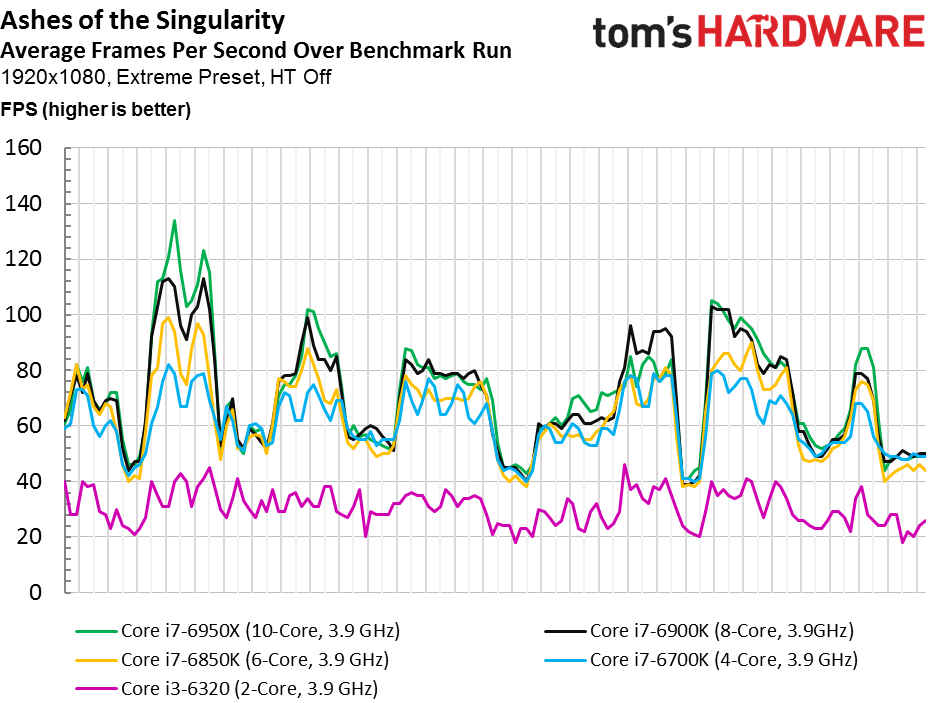

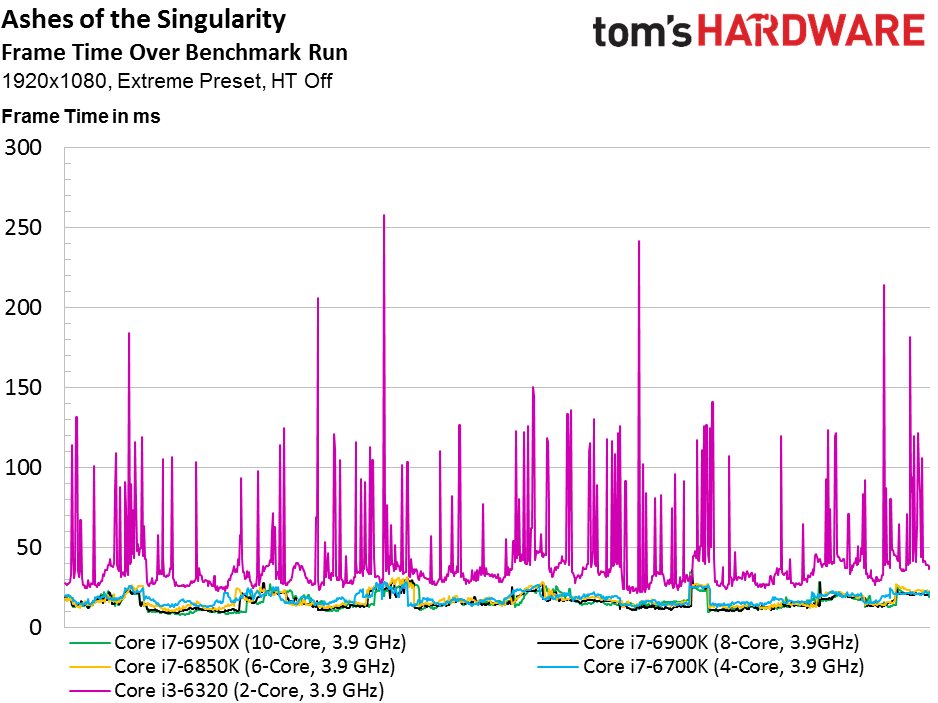

At 1920x1080, we clearly see the 10-core sample score a first-place finish. The ~2% lead may not justify a $1650 price tag, but there it is nonetheless. Intel’s eight- and six-core Broadwell-E processors take second and third place, while the quad-core Skylake-based configuration lands in fourth.
The dual-core example on our chart merits special attention, given its severe performance loss. Remember that we’re testing these CPUs with Hyper-Threading disabled. That feature would make a significant difference if we were comparing real-world configurations. Just because we’re using a Core i3 in this experiment doesn’t mean the outcome represents an actual Core i3. In reality, with HT technology enabled, you’d see a much higher number. If anything, our numbers come closest to what you might see from a 3.9 GHz Pentium.
For all of those enthusiasts who lobbied so hard for us to pull the Pentium G3258 from our Best CPUs column, you were right on the money. Average frame rate is clearly capped, and our frame time chart shows severe spikes that manifest as stuttering on-screen.
Get Tom's Hardware's best news and in-depth reviews, straight to your inbox.

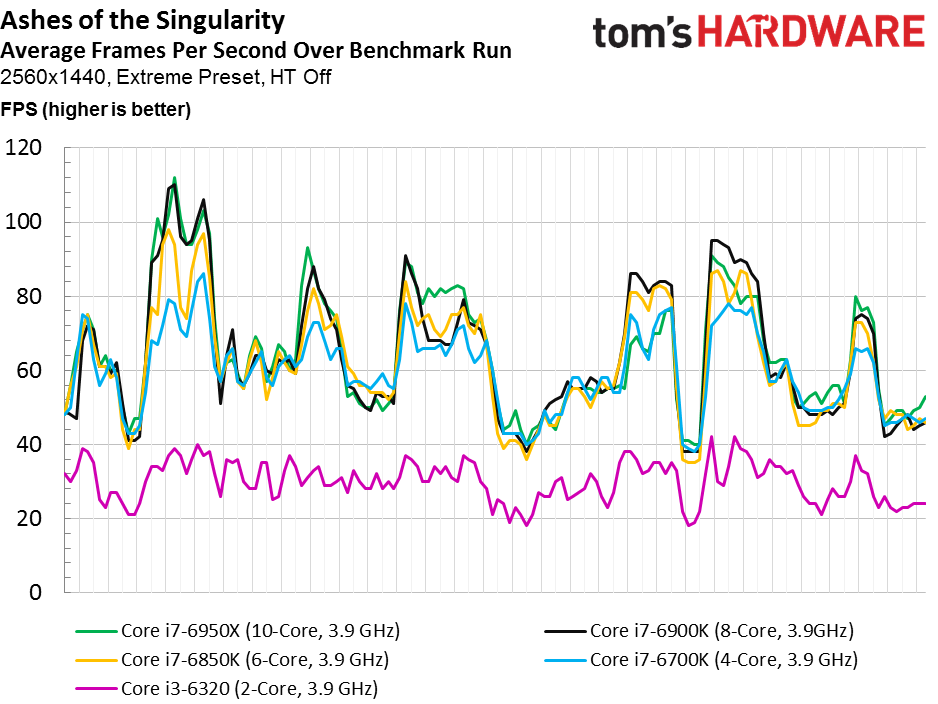
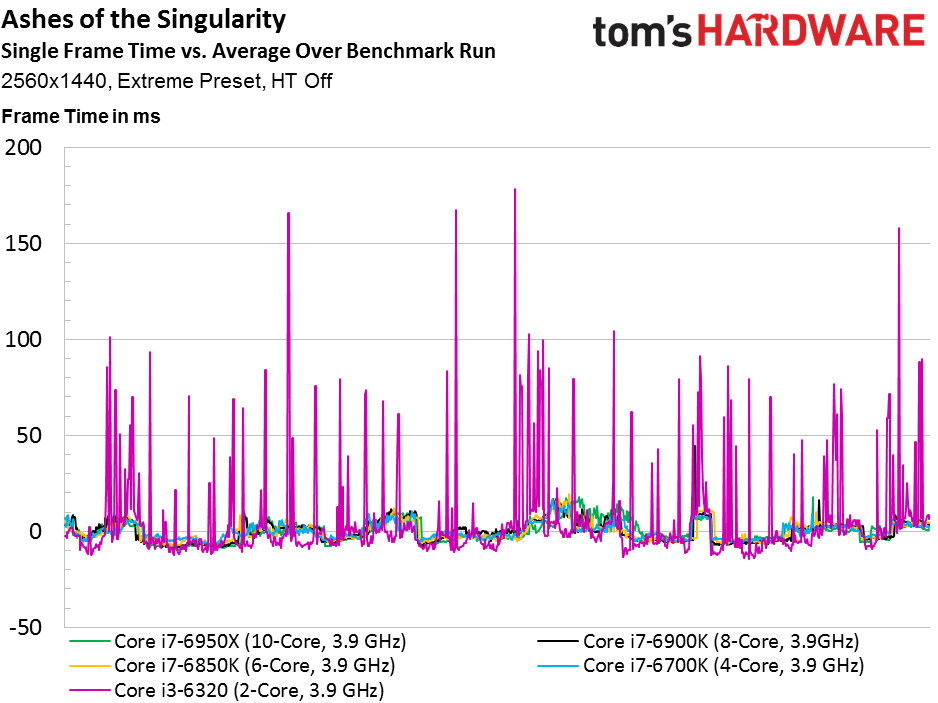

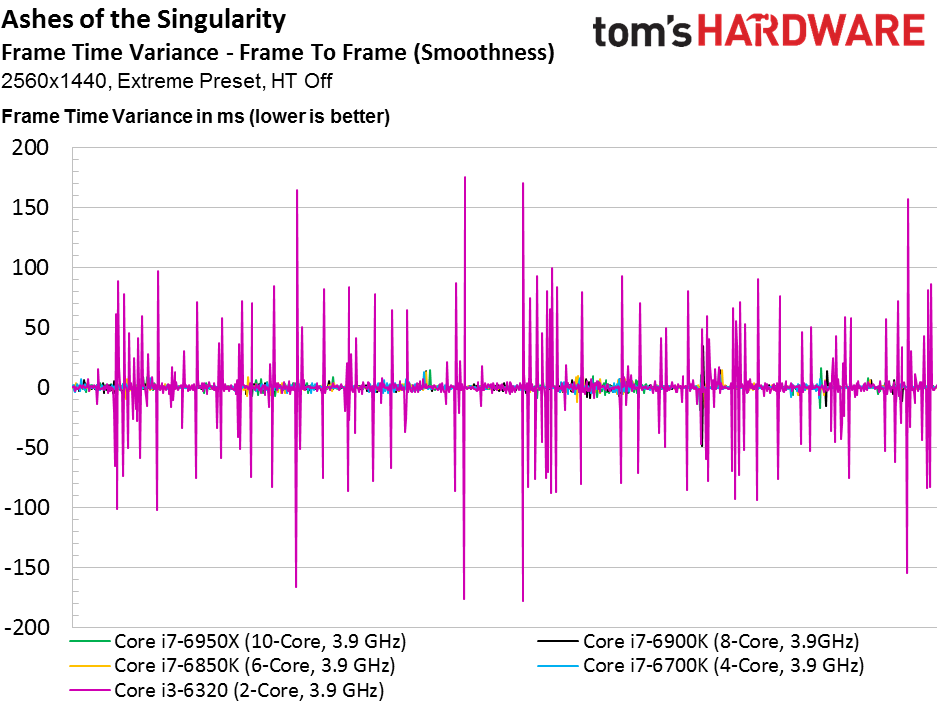
Low resolutions are great for evaluating platform bottlenecks because the graphics workload isn’t as taxing, reducing the GPU’s utilization. As you start pushing more pixels through the pipeline, however, the graphics card has a harder time keeping up.
Shifting from 1920x1080 to 2560x1440 is enough to erode away our 10-core sample’s gains (a ~2% lead shrinks to less than 1%). And instead of being >17% faster than the quad-core Skylake config, it’s now 8% quicker. This is a resolution a GTX 1080 is well suited for, so our results are more relatable to real-world gaming.
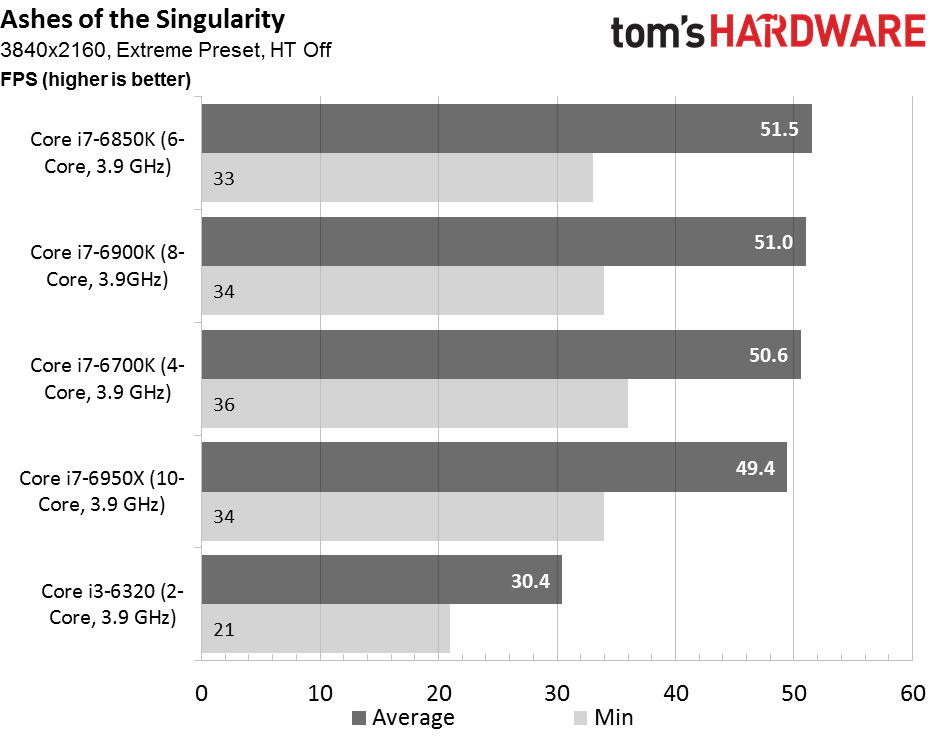
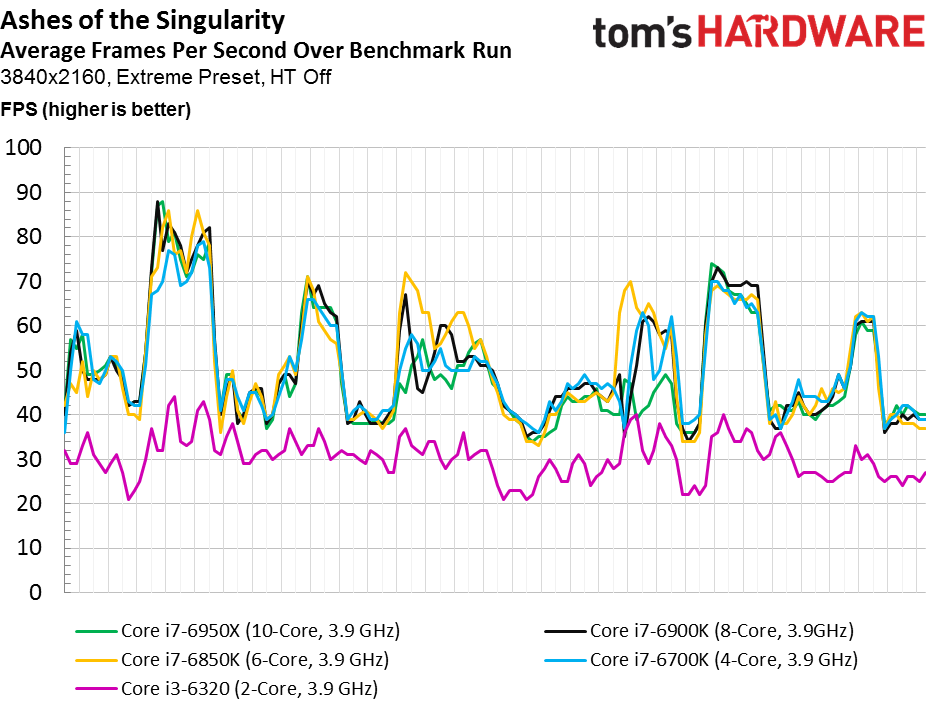
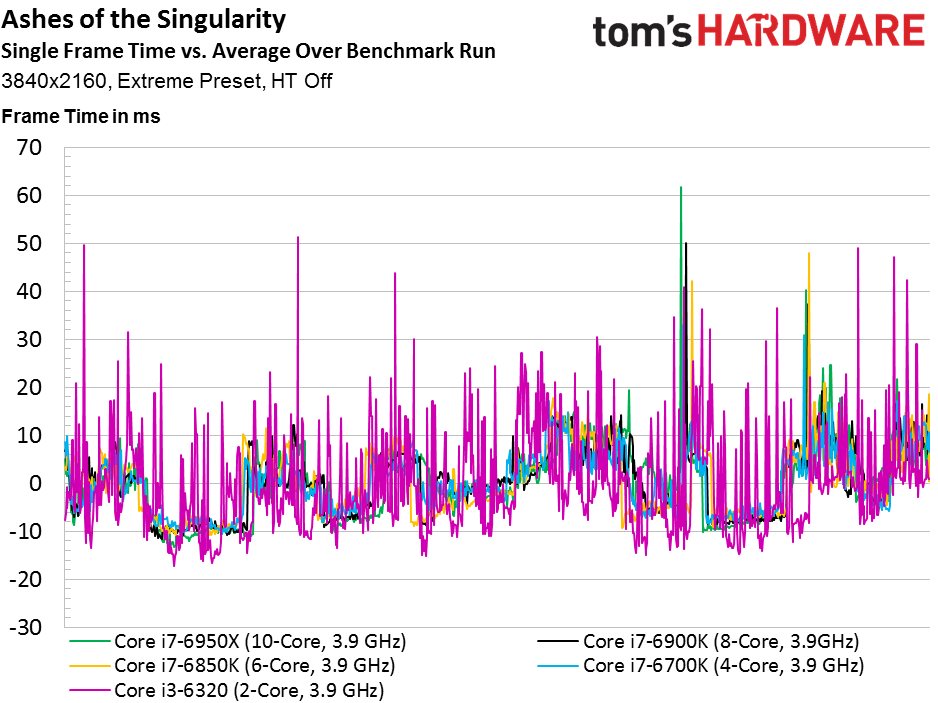
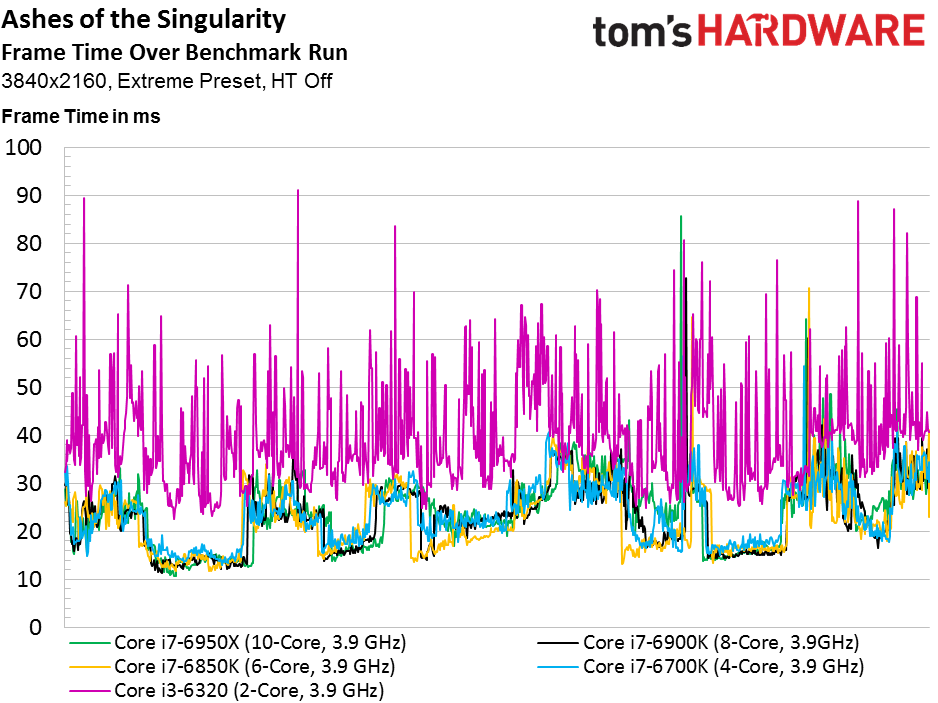
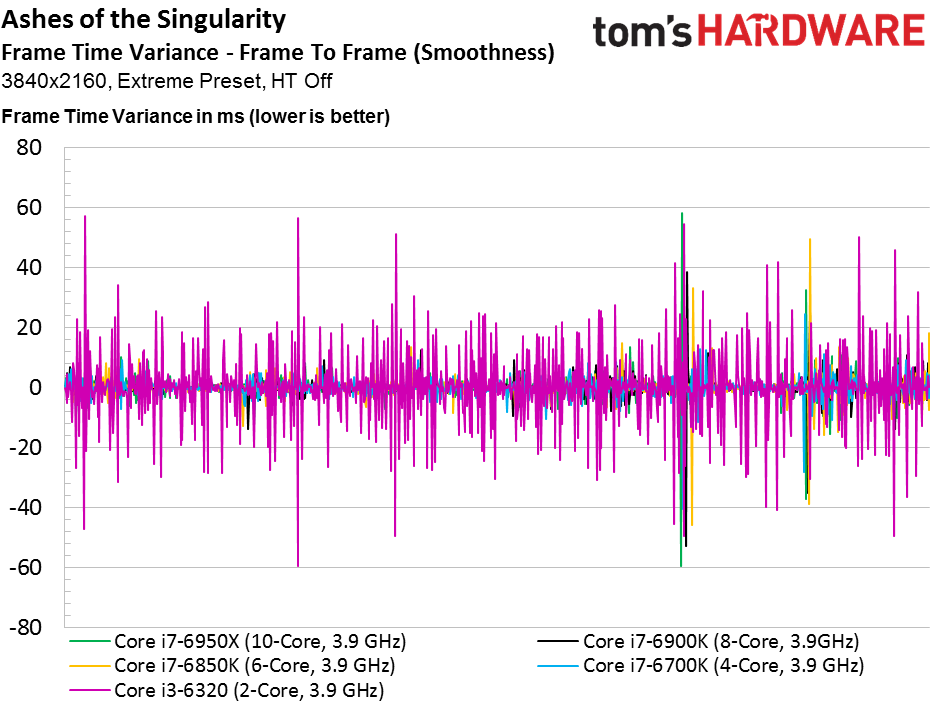
By the time we get to 3840x2160, there’s no longer a quantifiable reason to pair the GeForce GTX 1080 with a 10-core CPU. In fact, our modified Core i7-6950X is in second-to-last place, though for all intents and purposes, the top four finishers are tied.
Only the simulated dual-core CPU at 3.9 GHz is distinctly different, and that processor hasn’t budged since 1920x1080. It is a steadfast bottleneck across resolutions.
MORE: Best CPUs
MORE: Intel & AMD Processor Hierarchy
MORE: All CPU Content
Battlefield 4
According to DICE’s Johan Andersson, Battlefield 4’s Frostbite engine is parallelized to run on up to eight CPU cores. However, in a presentation he gave back in 2014, he conceded that it’s not possible to utilize all available CPU cores under the then-current implementations of DirectX and OpenGL. In the next chapter of this series, we’ll look at how Mantle affects performance in this older title. For now, however, we’re analyzing the single-player benchmark from our graphics card suite under DirectX 11.
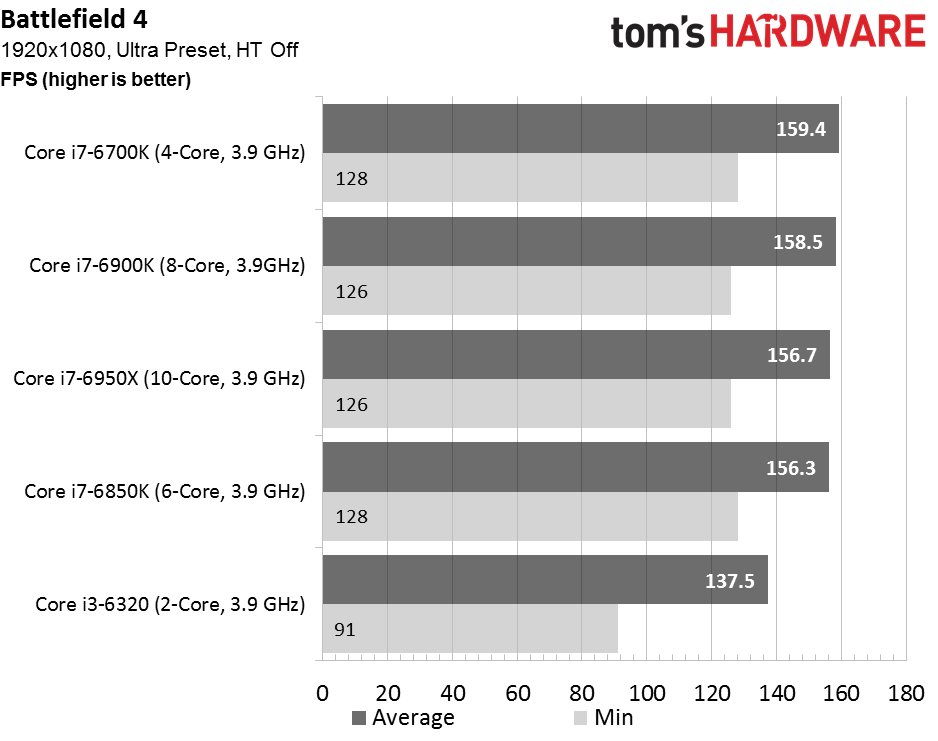

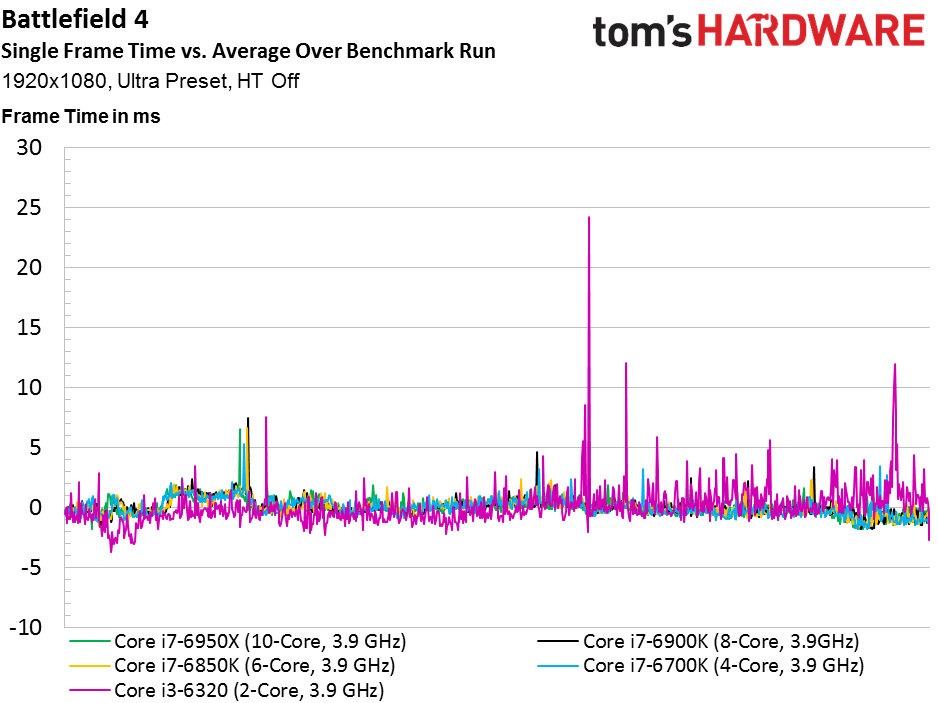
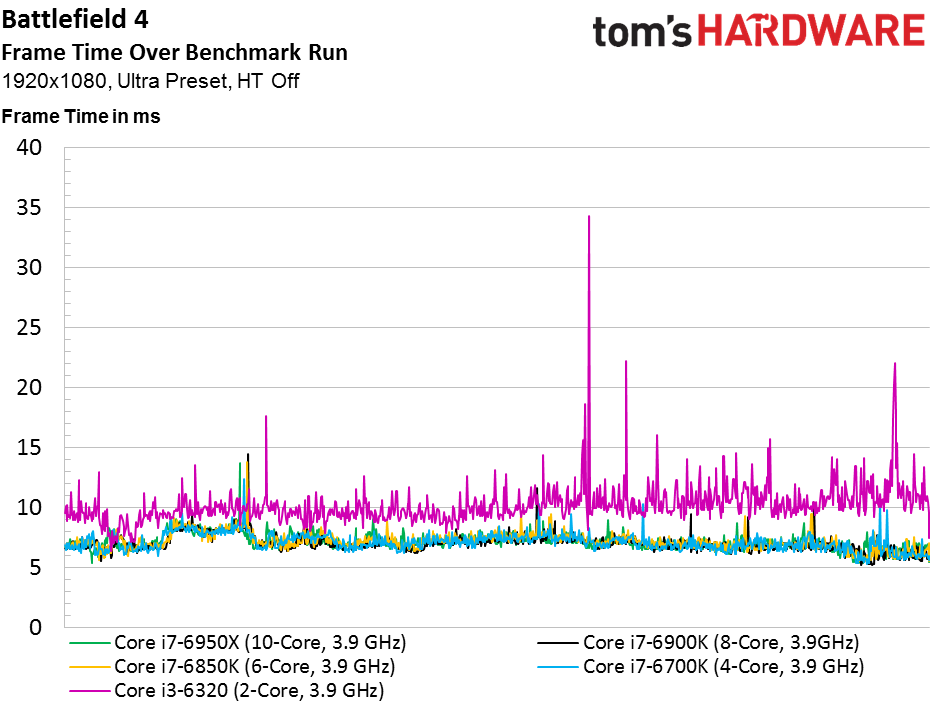
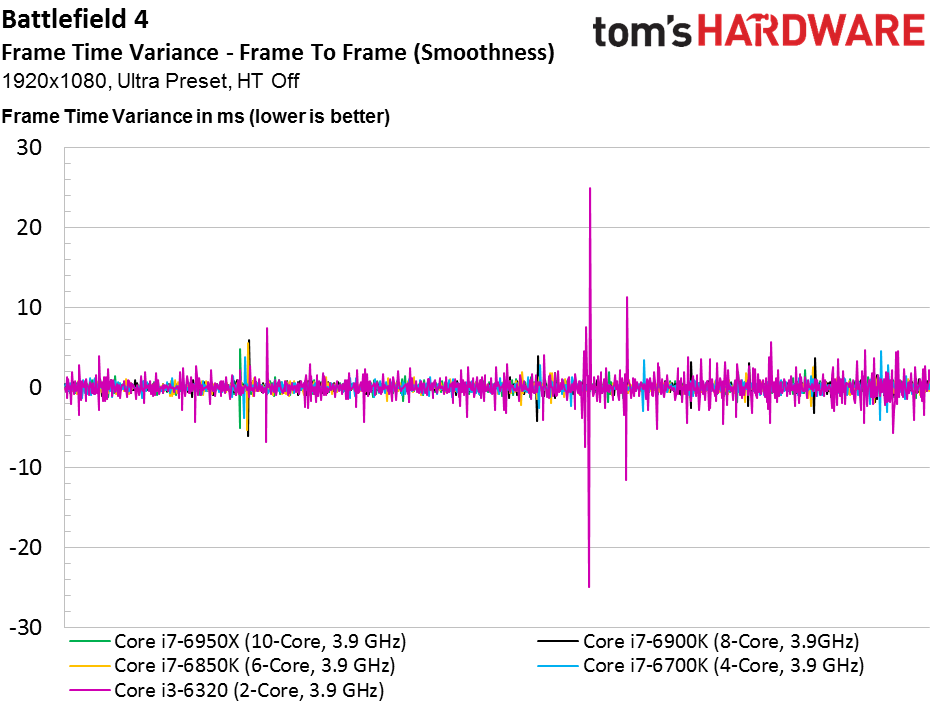
For as long as we’ve used the Tashgar test, we’ve known that it’s graphics-bound. At the request of our readers, we explored creating a multi-player metric more indicative of how Battlefield 4 is still played years after its introduction. After exchanging emails with DICE, though, it became clear that a consistent, reproducible scenario was not in the cards.
As such, we see no scaling whatsoever above four cores, even if the game is claimed to utilize additional host processing resources (and it certainly does in the multi-player campaign, at least). The only data point that does stand out is our simulated dual-core Skylake-based CPU that lags the rest of the field and demonstrates much higher frame times throughout the 100-second recording.

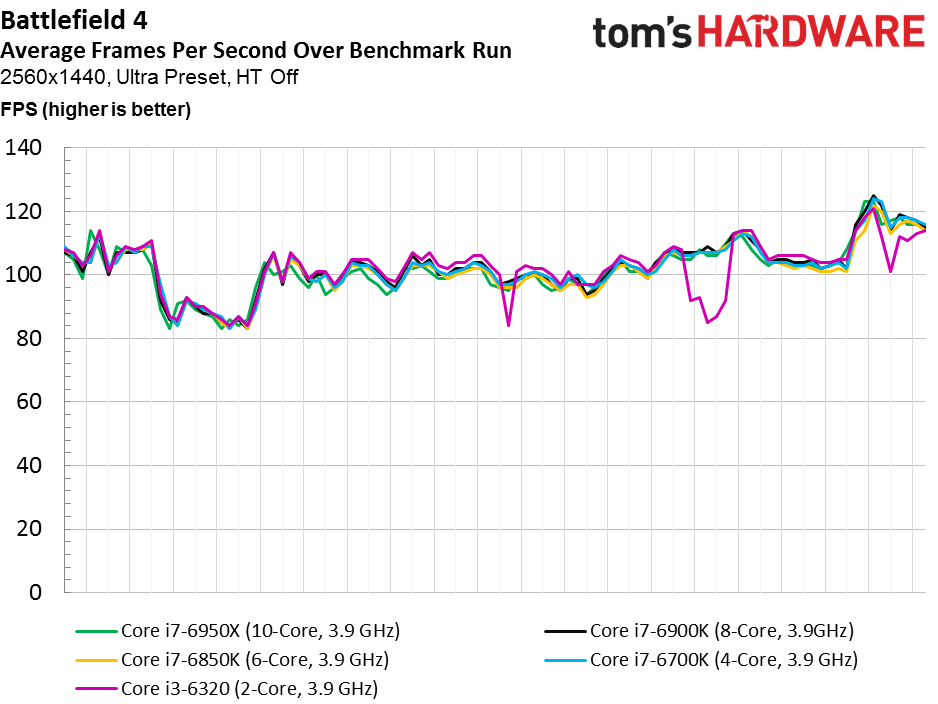
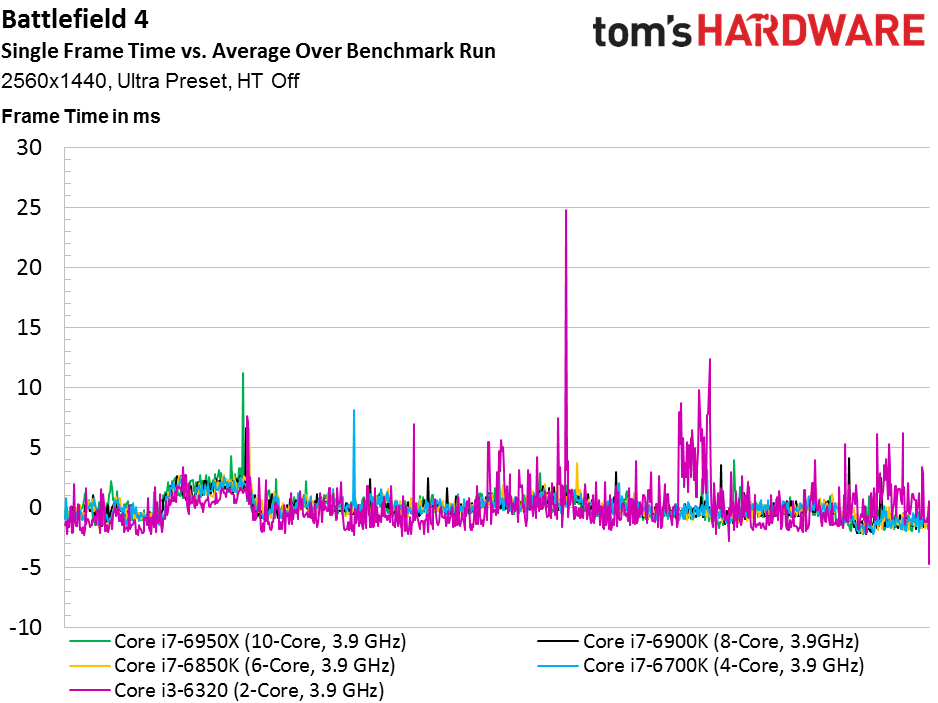
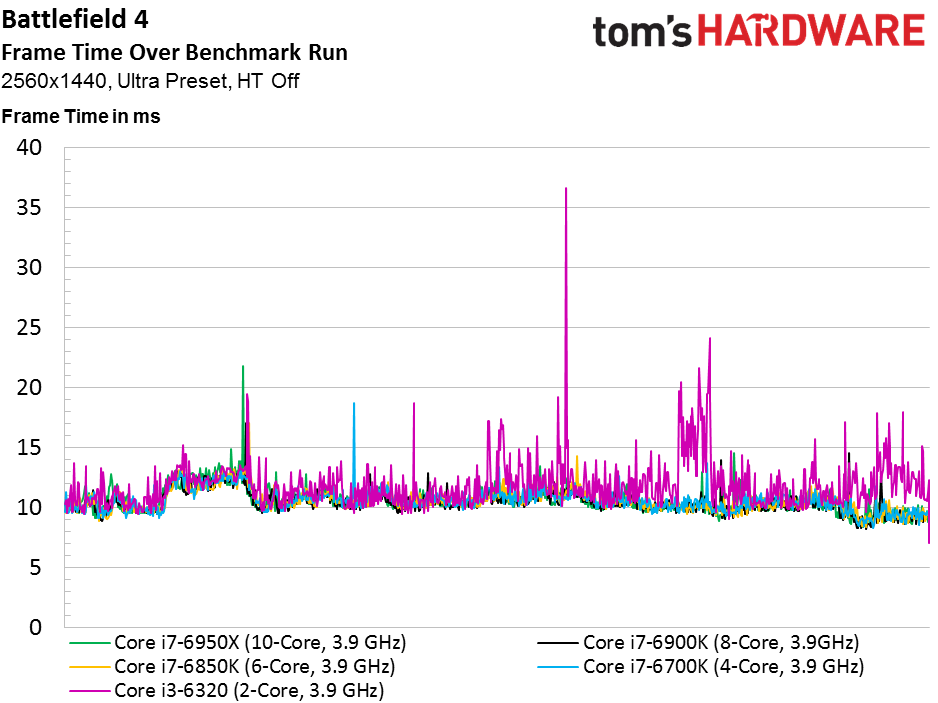
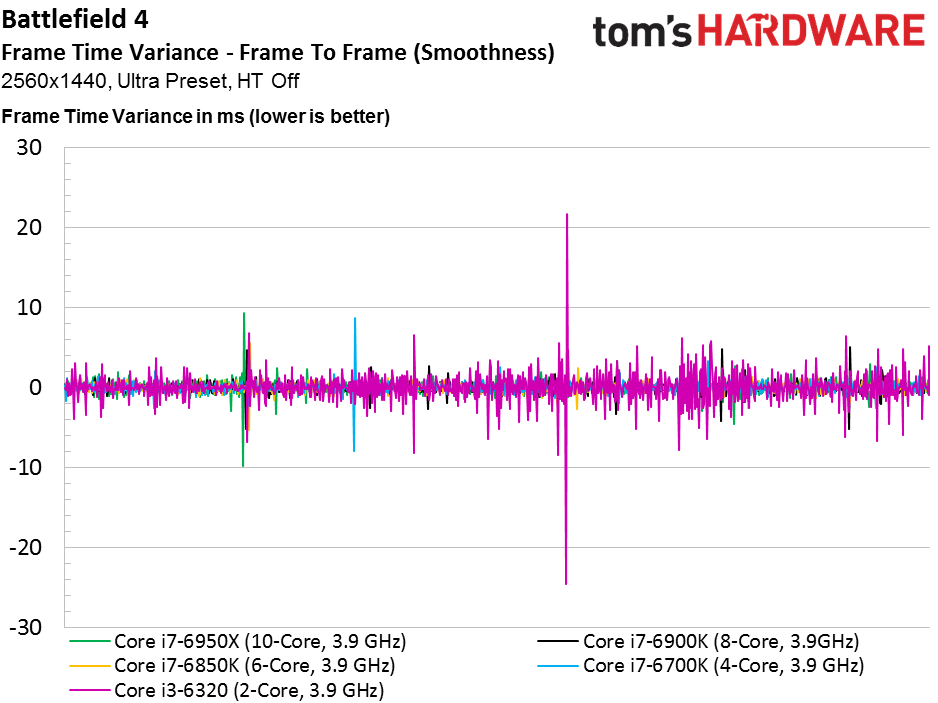
The graphics workload at 2560x1440 is such that even the dual-core Intel processor averages similar frame rates as the other four configurations. Drill down a little further, though, and you’ll see its performance is less consistent, incurring higher frame times through more of the run. Otherwise, all of the CPUs average within 1 FPS of each other.

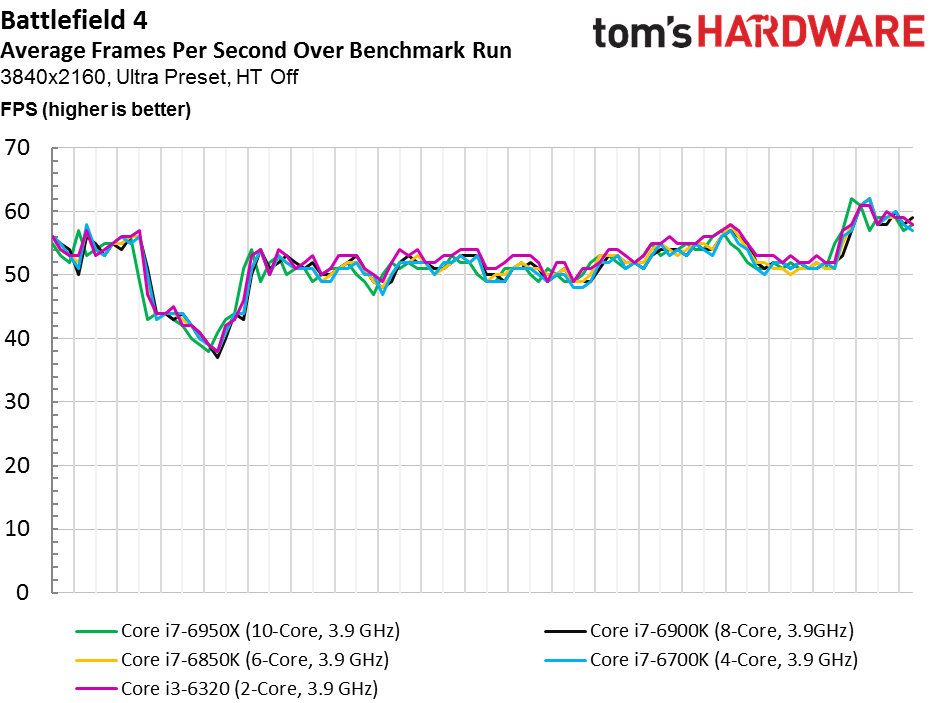

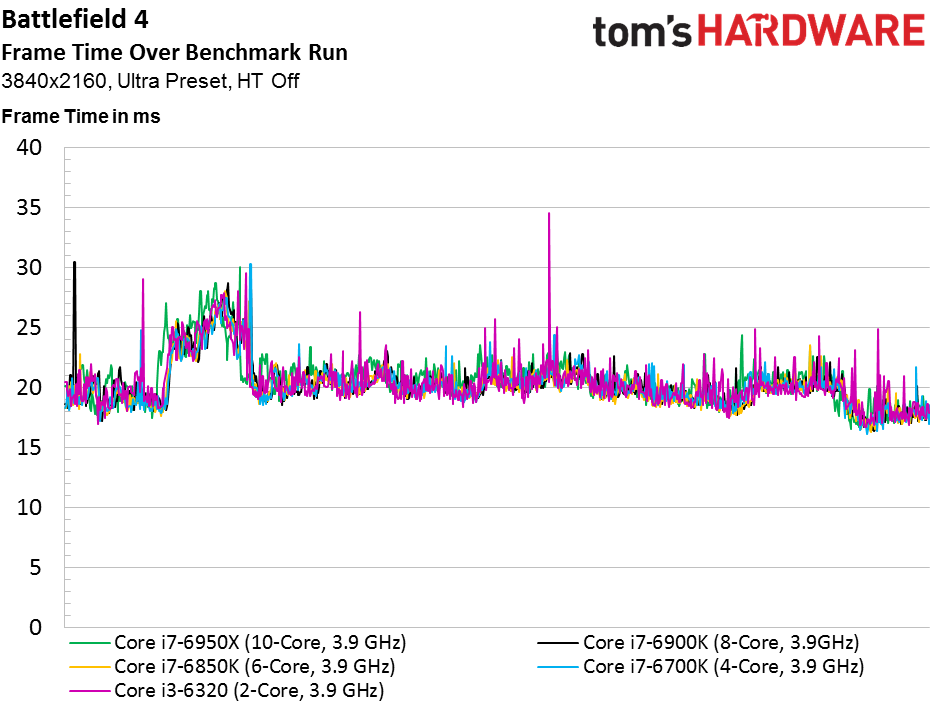

Stepping up to 4K is the great equalizer. Our benchmark on rails shows all five core configurations in a similar light, and even the frame time spikes aren’t as numerous or problematic. By this resolution, graphics processing is clearly the limiting factor in our performance measurement.
Current page: Ashes of the Singularity & Battlefield 4
Prev Page Comparing 2, 4, 6, 8, And 10-Core CPUs In DX11 Next Page Grand Theft Auto V & Hitman (2016)-
ledhead11 Awesome article! Looking forward to the rest.Reply
Any chance you can do a run through with 1080SLI or even Titan SLi. There was another article recently on Titan SLI that mentioned 100% CPU bottleneck on the 6700k with 50% load on the Titans @ 4k/60hz. -
Wouldn't it have been a more representative benchmark if you just used the same CPU and limited how many cores the games can use?Reply
-
Traciatim Looks like even years later the prevailing wisdom of "Buy an overclockable i5 with the best video card you can afford" still holds true for pretty much any gaming scenario. I wonder how long it will be until that changes.Reply -
nopking Your GTA V is currently listing at $3,982.00, which is slightly more than I paid for it when it first came out (about 66x)Reply -
TechyInAZ Reply18759076 said:Looks like even years later the prevailing wisdom of "Buy an overclockable i5 with the best video card you can afford" still holds true for pretty much any gaming scenario. I wonder how long it will be until that changes.
Once DX12 goes mainstream, we'll probably see a balanced of "OCed Core i5 with most expensive GPU" For fps shooters. But for CPU the more CPU demanding games it will probably be "Core i7 with most expensive GPU you can afford" (or Zen CPU). -
avatar_raq Great article, Chris. Looking forward for part 2 and I second ledhead11's wish to see a part 3 and 4 examining SLI configurations.Reply -
problematiq I would like to see an article comparing 1st 2nd and 3rd gen I series to the current generation as far as "Should you upgrade?". still cruising on my 3770k though.Reply -
Brian_R170 Isn't it possible use the i7-6950X for all of 2-, 4-, 6-, 8-, and 10-core tests by just disabling cores in the OS? That eliminates the other differences between the various CPUs and show only the benefit of more cores.Reply -
TechyInAZ Reply18759510 said:Isn't it possible use the i7-6950X for all of 2-, 4-, 6-, 8-, and 10-core tests by just disabling cores in the OS? That eliminates the other differences between the various CPUs and show only the benefit of more cores.
Possibly. But it would be a bit unrealistic because of all the extra cache the CPU would have on hand. No quad core has the amount of L2 and L3 cache that the 6950X has. -
filippi I would like to see both i3 w/ HT off and i3 w/ HT on. That article would be the perfect spot to show that.Reply

